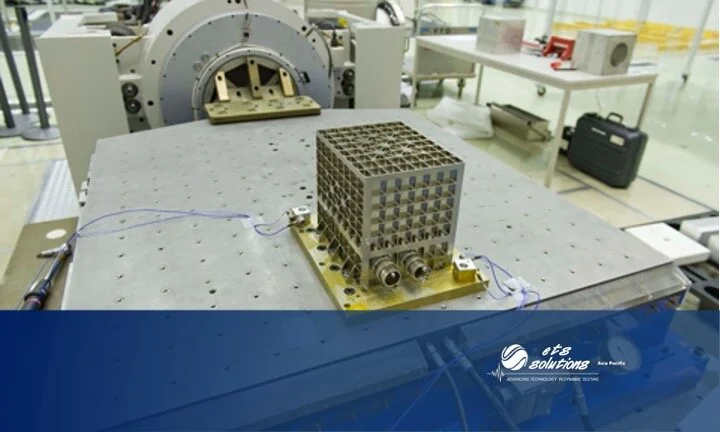Vibration measurement is complex because of its many components: displacement, velocity, acceleration, and frequencies. Vibration measurement is an effective, non-intrusive method to monitor machine condition during start-ups, shutdowns and normal operation. Regular vibration monitoring can detect in a power plant shaft lines, deteriorations and defects of a number of various structural mechanical conditions, for example cracks, bearing faults, coupling damage, imbalance as well as interruptions in the electric grid.
Gas Turbine Vibration Monitoring
Vibration measurements are commonly considered to be a sound indicator of a machine’s overall health state (global monitoring).The general principle behind using vibration data is that when faults start to develop, the system dynamics change, which results in different vibration patterns from those observed at the healthy state of the system monitored.
Vibration Analysis on a conveyor unit
Belt conveyors are an integrated transmission and carrying mechanism with length sometimes extending several thousand meters. In traditional design and analysis of belt conveyors, vibration and impact are usually ignored and only static design is considered. However, to ensure the safety of conveyor operation for this restricted analysis, designers must increase the safety factor, which increases production costs. Many research groups have conducted dynamic analysis of large belt conveyors to reduce production cost and optimize conveyor performance. The conveyor belt was first modeled as an elastic body and then a viscoelastic body to incorporate viscoelastic characteristics of belt cover layer.
Electronic Components Reliability Testing
If your company makes planes, trains, automobiles, medical devices, computers, and communication systems, or you are a large electronic device supplier, the reliability of your products in the field is crucial to your business success. The growing market for electric and hybrid vehicles is increasing the pressure on life-time performance of the devices that power them.
Torsional Vibration Analysis
Torsional vibration measurements allow engineers to better understand the dynamics of their rotating equipment, enabling them to troubleshoot and/or validate performance. With a better understanding of the reasons and methods to measure torsional vibration, the right instrumentation, and a helpful partner, you will become better positioned to make the decisions you need to decrease downtime and increase productivity.
Vibration Analysis
Vibration analysis is the most prevalent method used to monitor the levels and patterns of vibration signals within a component, machinery or structure, in order to detect abnormal vibration events and then using that information to analyse and evaluate the overall condition of the component, machinery or structure. In short, vibration analysis helps you monitor and detect issues using vibration data
How to choose the right packaging testing methods – Shock Testing
If you’re designing the packaging for a new product or a rebranding, you probably want to know how safe your goods will be and how customers will react to your packaging before you invest in a final design. With packaging testing, you can both satisfy consumer sentiment and choose the right packaging design for your product from the safety point of view.
Different Types of Calibration
Measurement equipment calibration can be carried out on different types of instruments across different sectors. Electrical calibration refers to the process of verifying the performance of any instrument that measures or tests electrical parameters such as: voltage, current, resistance, inductance, capacitance, time and frequency. Mechanical instruments are subject to drift due to regular usage, mechanical shock and exposure to varying atmospheric conditions, as such mechanical calibration is needed.
The benefits of An Accredited Calibration Services Laboratory
The benefits of calibration include improving safety as well as saving money and increasing profitability by avoiding the costs of false acceptance and rejection of products, increasing production efficiency, and extending the life of the equipment. Since the standards of accredited calibration labs are set really high, you can be confident of the accuracy levels of the calibrations.
Factors That Affect The Accuracy of Measurements
Instrument calibration ensures that the instruments perform with high accuracy without compromising the final quality of the product. They perform best when they are calibrated following the manufacturers’ recommendations. Several factors may affect calibration, which will further affect the end quality, rendering the objective of calibration useless. Three of these factors are discussed in this article.
Calibration Programs Can Improve Your Business
Definition of Reliability and Validity
Reliability and Validity these two terms are sometimes used interchangeably in research and evaluations. Reliability and validity are concepts used to evaluate the quality of research. They indicate how well a method, technique or test measures something. Reliability is about the consistency of a measure, and validity is about the accuracy of a measure.
Accredited Vibration Testing Services in Singapore
Products are vibration tested to determine limits and tolerances. Every product is vulnerable to vibration loads and potential breakage or failure. That includes tiny objects like microprocessors and circuit boards right up to giant structures like bridges and skyscrapers. Testing through vibrations ensures the product is qualified for its intended purpose and meets safety and regulatory standards, as well as complies with any International Standards Organization (ISO) requirements.



















